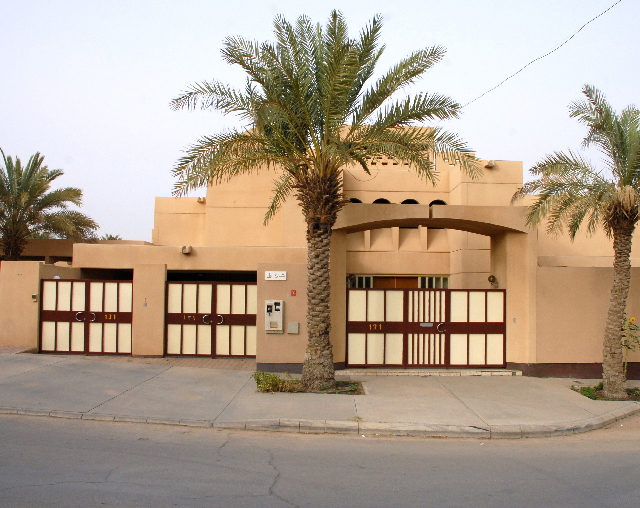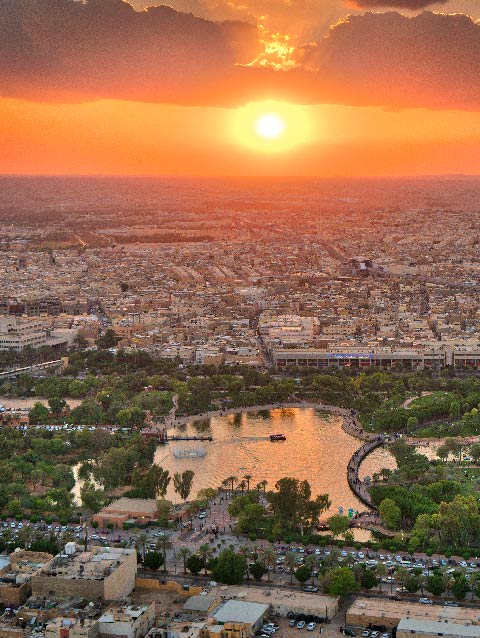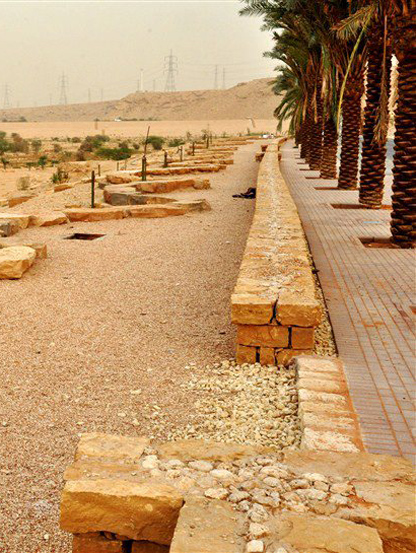HOME / PROGRAMS AND PROJECTS
Ministry of Foreign Affairs Staff Housing Complex Project in Riyadh
Ministry of Foreign Affairs Staff Housing Complex Project in Riyadh
The Ministry of Foreign Affairs Staff Housing Complex Project is the first project of the Royal Commission for Riyadh City in the capital. It was constructed in response to the decision of the Council of Ministers in 1395 AH. to relocate the headquarters of the Ministry of Foreign Affairs and diplomatic missions from the city of Jeddah to the capital Riyadh, including the transfer of the entire administrative apparatus of the ministry’s employees with their families.
The Ministry of Foreign Affairs Staff Housing Complex spans an area of 39 hectares in the Muhmadiyah district in Riyadh. The complex is characterized by its design and visibility of cultural and environmental features in its urban structures in a space where social, cultural, educational, and recreational requirements are met while maintaining the greatest privacy through a combination of environmental features and modern welfare reasons.

Housing Areas
The complex consists of 612 housing units with approximately 3,600 inhabitants. These units range from independent villas, adjacent villas, or apartments in multi-story buildings, distributed according to the composition of the complex’s land. Large housing units with large gardens were placed on the west side of the site, while smaller units and buildings were placed in the steep hills eastern region. Twelve different designs have been adopted for residential units to achieve the greatest architectural diversity within the neighborhood. Stone and concrete stairs have been provided within the site’s natural formations to facilitate the movement of pedestrians between the different levels of the neighborhood. The interior of the residential units is characterized by providing natural lighting throughout the day through arches that allow light to run out without heat.
Public facilities
The neighborhood is characterized by the complementarity of public facilities, which are designed to be located in the center of the complex to serve the entire people. These facilities include mosques, schools, health service facilities, clubs and commercial centers.
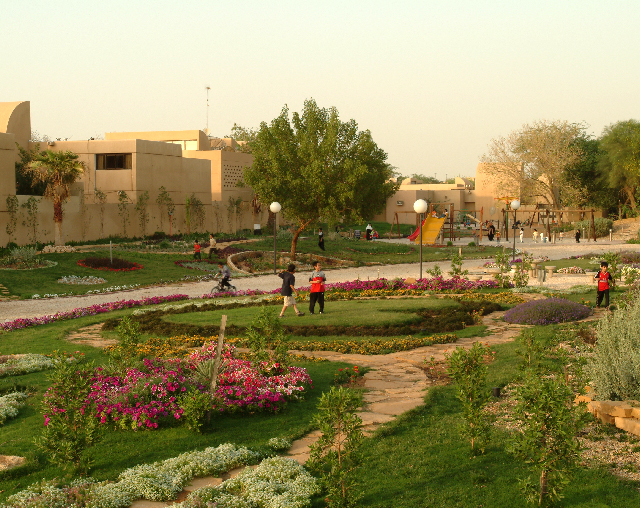
Mosques
There are two mosques in the neighborhood, the first of which is the central mosque; located in the eastern end of the Central District and accommodates a thousand worshippers.
Healthcare Center
The residential complex has a primary healthcare center under the Ministry of Health, which serves the residential complex and the population of the Muhammadiyah district. The center is equipped to serve immediate preventive and medical needs and follows the Ministry of Health’s Primary Care Program.
Recreational clubs
The complex includes a water playground and children’s playgrounds, all equipped with toys and seating areas in accordance with safety and security requirements. Local plants that could resist the region’s climatic conditions were grown in the clubhouse garden.
Roads and paths
The neighborhood offers a high-end model in the field of transport, especially the pedestrian road network. The transport network within the complex was built on the basis of determining internal traffic in residential areas and finding a central car-free zone as much as possible. With reliance on an advanced network of pedestrian paths in all aspects of the complex, in which seating areas and umbrellas are available and allow the movement of young and disabled people, and there is an element of safety in it, all streets and pedestrian paths are lit and planted on both sides; the design of streets takes into account factors that help reduce noise, such as reducing Intersections, a large number of informative signs, with a wider range and good visibility factors. Additionally, the complex has a comprehensive indication system that includes a distribution of information from the most general to the most specific, right down to home numbers. There are three types of parking. There are 1,700 spaces attached to residential units, 160 public utility parks and public street parks.
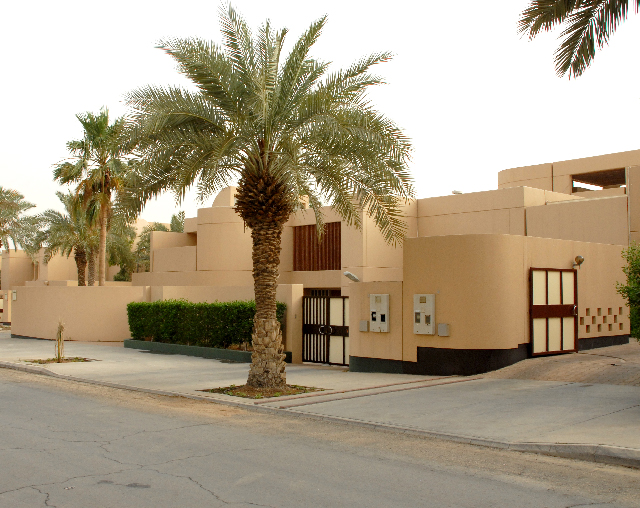
Infrastructure
The complex is a completely developed neighborhood with water and electricity systems connected to the city’s main service systems. It is also equipped with a ground tank of about 1,250,000 gallons, and the residential units and facilities of the complex are provided with water by the pressure generated by several pumps to deliver water to the highest points of the complex.
There is an integrated sewage system, a sewage drainage system, and a wastewater purification station with a capacity of 1,200 m2 per day, which is reused to irrigate green plants, either by dripping through a pumping network that operates according to scheduled summer and winter dates, or via concrete channels for indoor arenas and patios.
Architectural Award
The Ministry of Foreign Affairs Staff Housing Complex Project in Riyadh won the Council of Arab Ministers of Housing and Reconstruction Award for the year 1420 AH (2000), joining the list of projects of the Royal Commission for Riyadh City that achieved international architectural awards.
